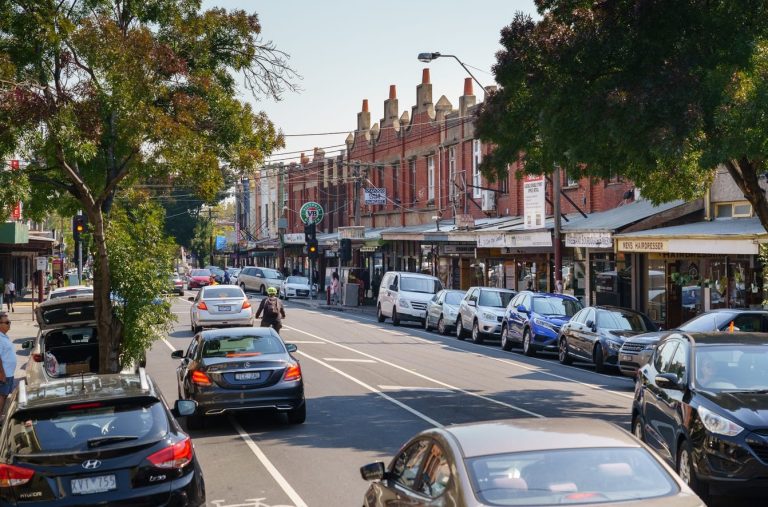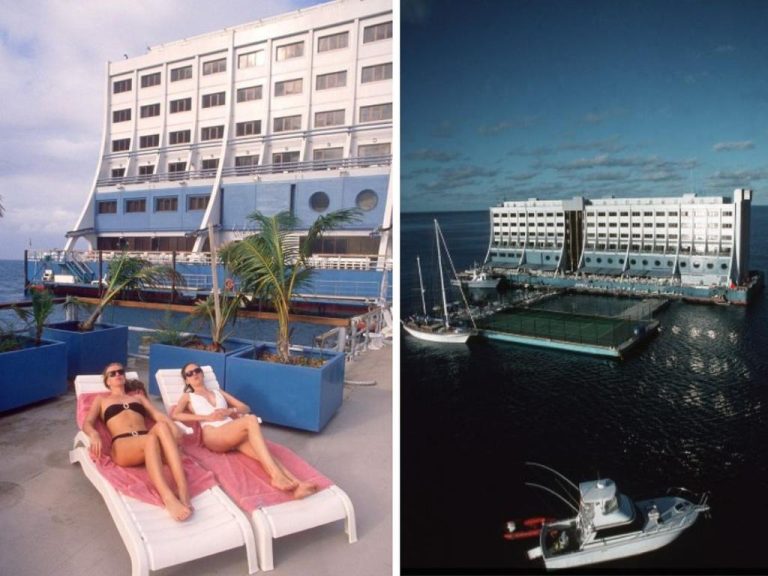Paddock to profit: How farmers are cashing in on country stays

Over the past decade, the tiny home movement has captured the imaginations of Australians, appealing to those chasing financial freedom, minimalist lifestyles, or relief from the rising cost of living. It’s also become a lucrative way for property owners to make the most of unused land.
Within the travel sector, the concept of nature-focused tiny accommodation has matured into a thriving sub-sector of the short-stay market where a weekend away no longer means a hotel or Airbnb stay, but a tiny cabin hidden away in a serene setting on a remote property.
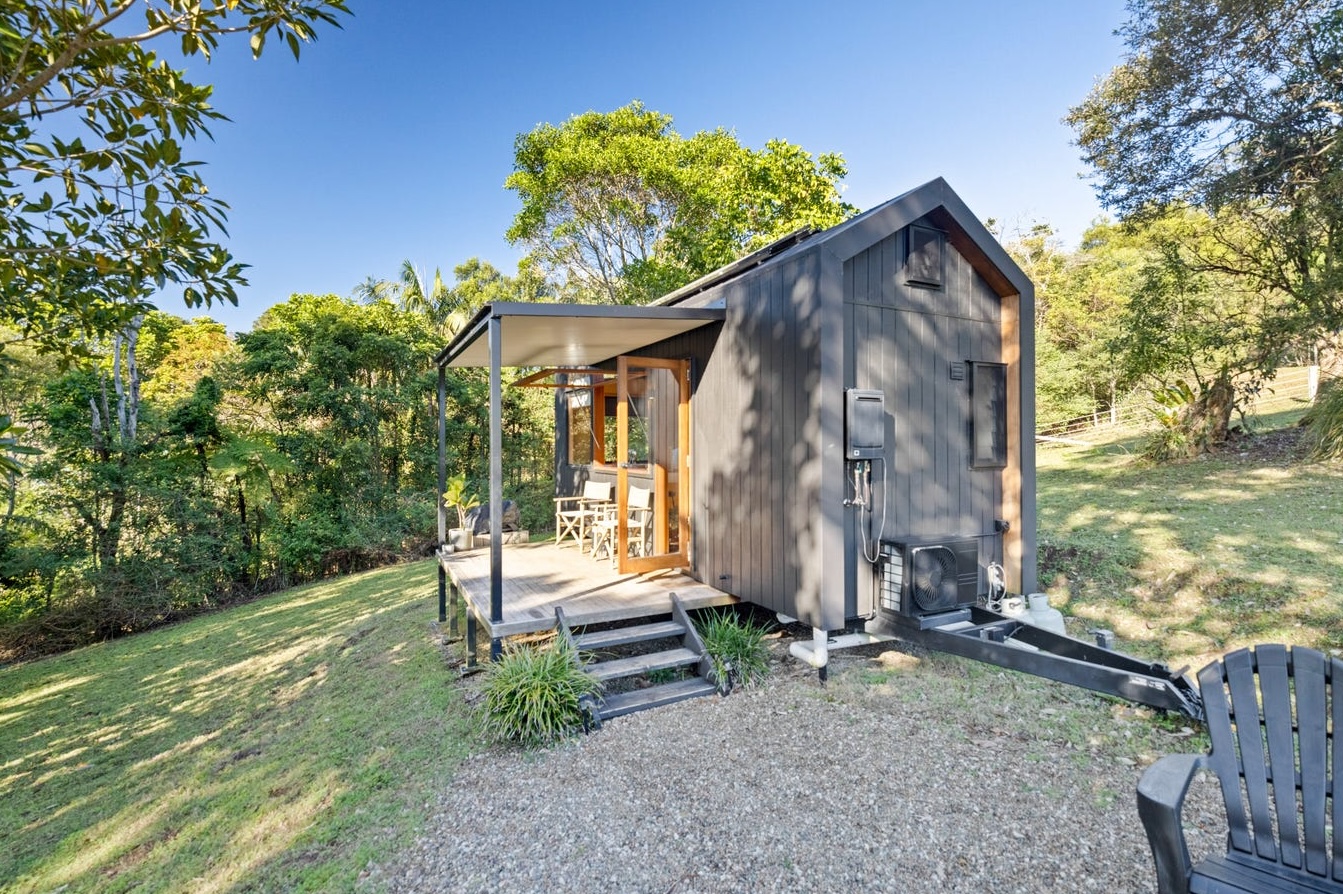
Just sold: This luxury property in the Sunshine Coast hinterland has two eco-designed tiny homes which each sleep four. Picture: realestate.com.au/sold
These cabins lure guests not with infinity pools or minibars, but with quiet isolation and the promise of a digital detox.
Travel journalist Justin Meneguzzi said the concept hit a cultural sweet spot just before the pandemic.
“Off-grid cabins arrived at the perfect time, when many of us were trying to get as far away from lockdown restrictions as possible. The idea of being remote and having the chance to properly connect with the outdoors really resonated with people,” he told realcommercial.com.au.
“Many of these companies have chosen to invest in good design, materials and unique locations, which has likely helped them appeal to people who love the idea of going camping for a long weekend but don’t own the gear or don’t want to rough it.”
Wellness in the wild
Founded by brothers Cameron and Chris Grant in 2016, one of Australia’s best known tiny cabin getaway brands, Unyoked, was built on the ethos of reconnecting people with the natural world by stripping life back to its essentials.
Each Unyoked tiny cabin is strategically placed in a secluded setting on a large property within a few hours of major cities. There’s no Wi-Fi, no TV, no air conditioning hum – just the rhythmic sounds of wind and wildlife.
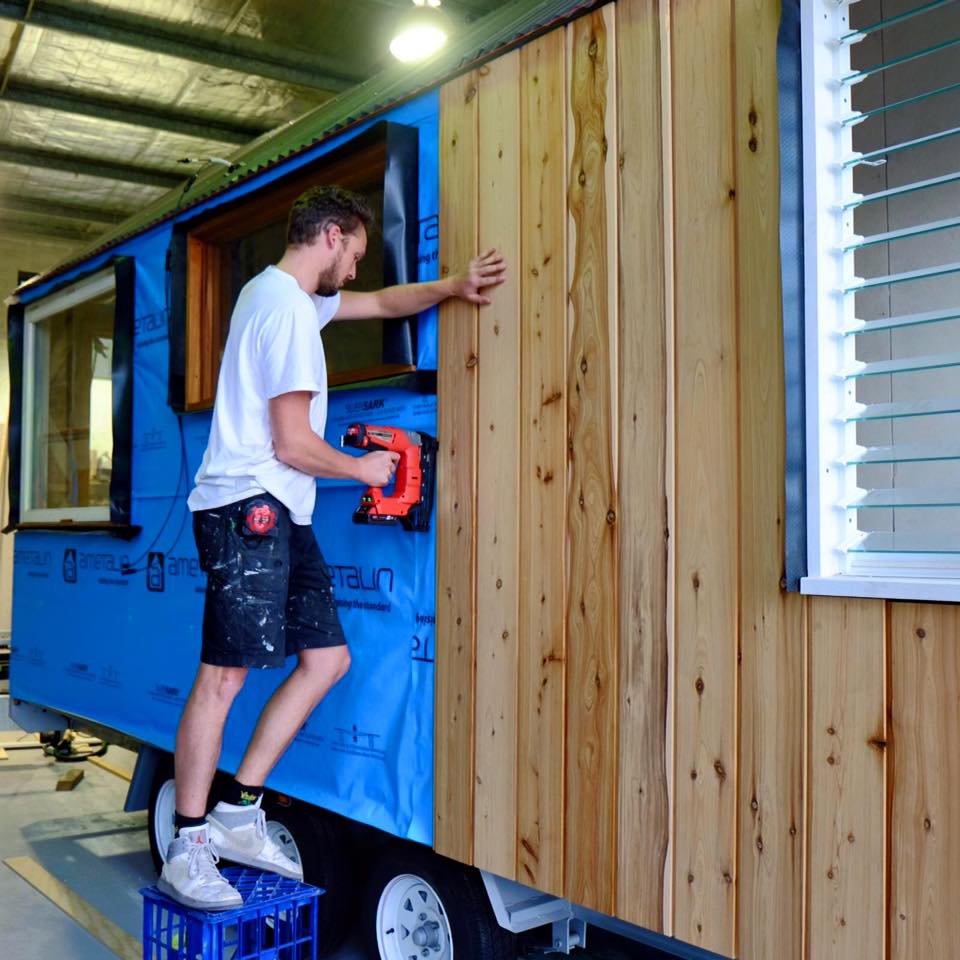
The first Unyoked tiny home being built in 2016. Picture: Facebook/Unyoked
Cameron Grant said the idea was conceived while he and his brother were locked into busy corporate careers.
“We were enjoying our jobs, but we were also stressed, anxious, and basically stuck in that nine-to-five rat race where the expectation is that you put your head down and then get one holiday a year. But then you end up doing more things during your time off and wind up busier than you were before,” he said.
“We did lots of camping and hiking growing up, going to places like Sumatra and Nepal, and realised those off-grid experiences always left us feeling refreshed, energised and happy. Unyoked was based on that concept; getaways designed to give people access to wilderness so they can switch off, recharge and reset when they need it most.”
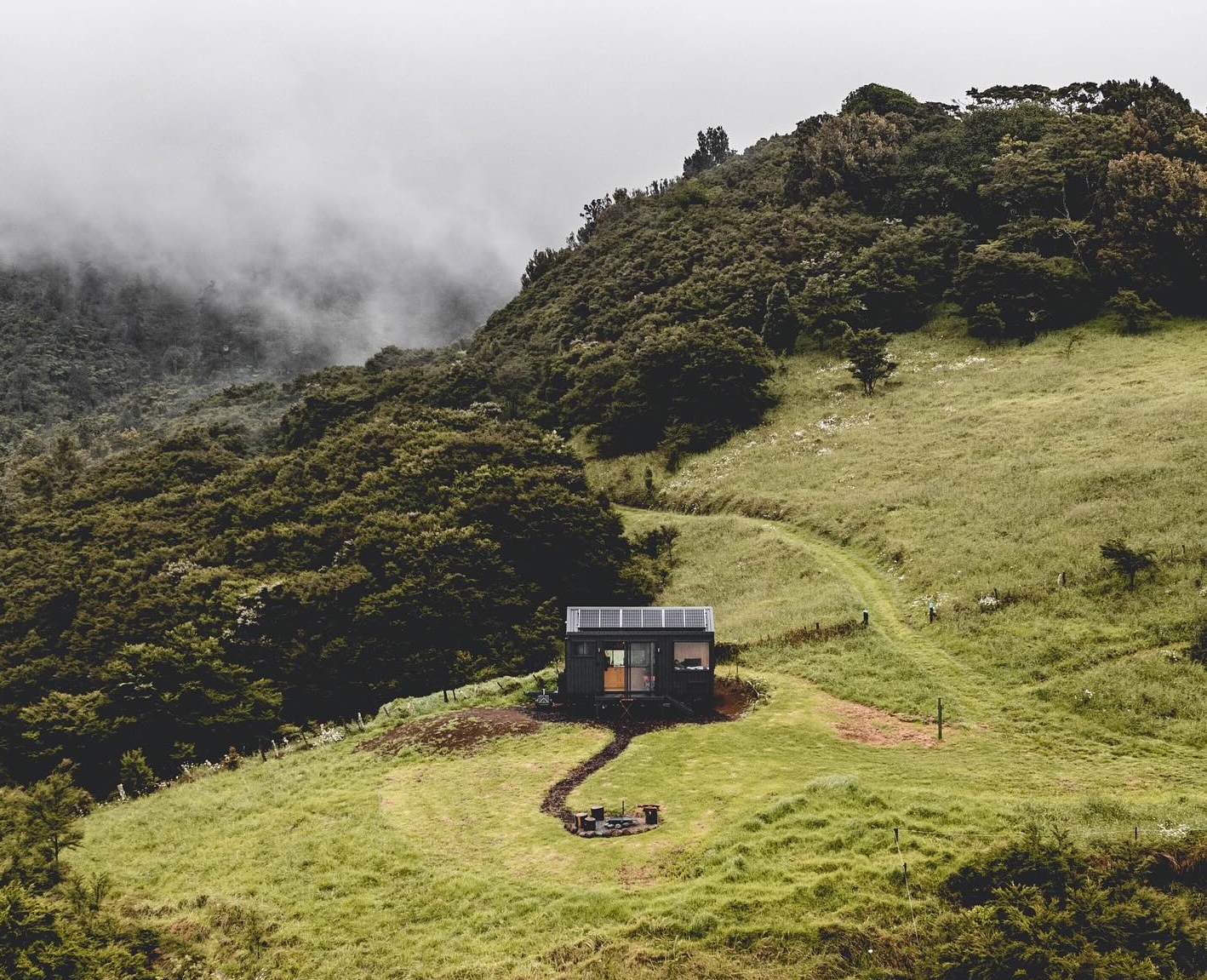
Unyoked now operates more than 135 cabins across Australia, New Zealand and the UK. Picture: Facebook/Unyoked
Among the first in Australia to combine wellness and tiny homes with short-stay travel, the brothers’ model turns quiet corners of rural properties into sought-after nature escapes.
“When we started, no one really knew what a tiny house was. Airbnb was relatively new, so we were lucky that people were starting to get comfortable with having strangers on their properties. We certainly weren’t the first to do that side of things, but no one had thought about putting a cabin in their back paddock or alongside a little glade.”
A decade later, Unyoked now operates more than 135 cabins across Australia, New Zealand and the UK. And market appetite continues to grow.
“We always had a strong conviction [when we started] that we were on the right track and it’s been great to witness this cultural shift where people are realising that nature is just as important as the gym, meditation, or healthy eating.”
Elevating the tiny experience
Launching around the same time as Unyoked, Into The Wild Escapes shares a similar ethos of reconnecting with nature, or ‘rewilding’, but with a more premium take on the tiny cabin experience.
Designed for comfort and indulgence, Into The Wild cabins feature beautiful private decks, outdoor hot tubs and baths, along with curated add-ons like in cabin massages or luxury picnic hampers stocked with local produce. Founder Celeste Giannas told realcommercial.com.au every detail is deliberate.
“From the beginning, our focus has been on elevating the tiny cabin experience and curating it as a premium escape,” she said.
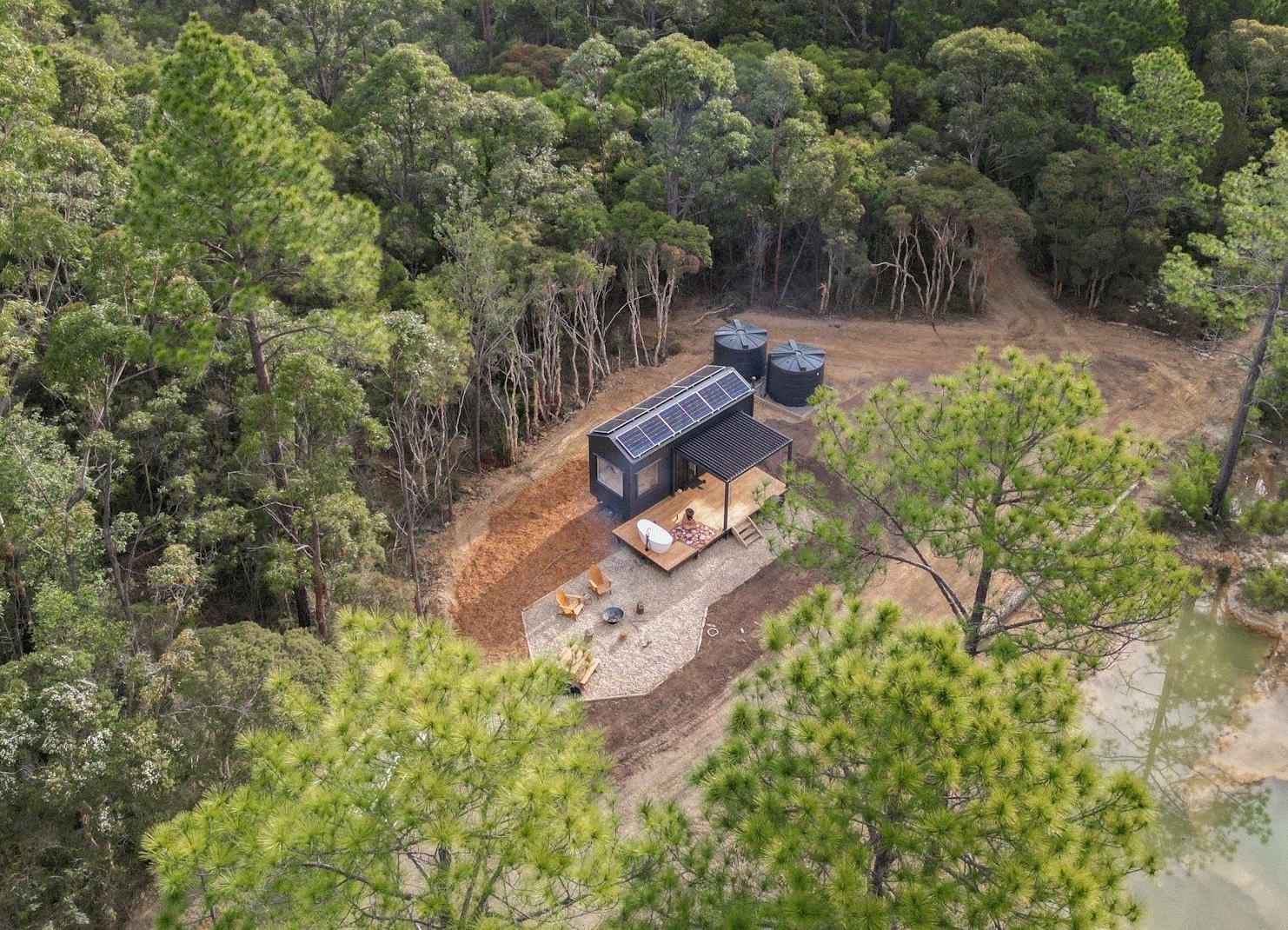
Landholders can choose between a fixed weekly lease or a share of the nightly booking fee when partnering with Into The Wild. Picture: Facebook/Into The Wild Escapes
Over time, the brand has also expanded to cater to families.
“Many of our cabins now include play equipment for children, bunk beds, and layouts that can sleep up to six people, so everyone can share the experience. We’ve had great feedback from families and groups.”
What began as a side hustle has grown into a network of 60 cabins nationwide, proof of the right idea arriving at the right time.
“I think people were looking for something authentic like this in travel. And the feedback we get is just incredible. People come away feeling what we want them to feel; that they have a sense of calm in their life and are living more simply after the experience.”
Turning land into revenue
A partnership model with landowners forms the backbone of these businesses, with both Unyoked and Into The Wild Escapes having built their success on a shared value approach.
“Essentially, it’s a paddock, a little glade surrounded by some trees, or a little piece of flat earth down near a river. It’s somewhere you can’t traditionally build on and somewhere that has some significance for the owner,” explained Unyoked’s Cam Grant.
“Our very first site was the owner’s favourite camping spot on his property. He wanted to open it up and share the magic with others.”
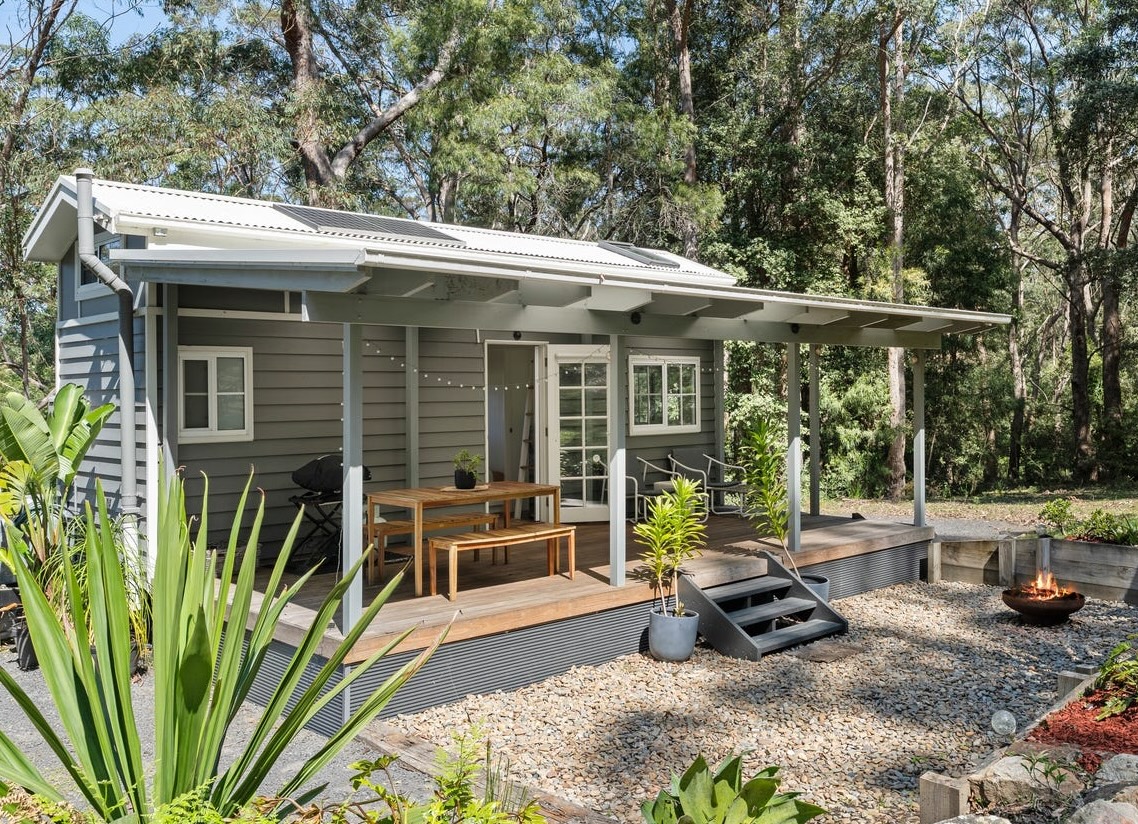
Tiny homes are a strong selling point. This property in Little Forest NSW is listed for sale, noting its “successful “Two Creeks Tiny” tiny home” has over 50 five-star reviews. Picture: realestate.com.au
The partnership model allows property owners to diversify income without the cost or complexity of a large-scale development.
“Property owners and farmers can basically turn a spare piece of land into a revenue generating asset, as long as it meets a few of our criteria,” Mr Grant said.
“They provide the property, which needs to be of reasonable size, and they also take care of any land preparation and also look after any necessary council approvals.”
Once given the go ahead, Unyoked installs and manages a tiny cabin while landowners handle basic upkeep.
“When the space is ready, we set up the cabin, at no cost to the landowner, then partner with them to look after the housekeeping,” he said. “We handle everything else; bookings, marketing, customer management and any ongoing maintenance. Owners then earn a fixed rate of each booking.”
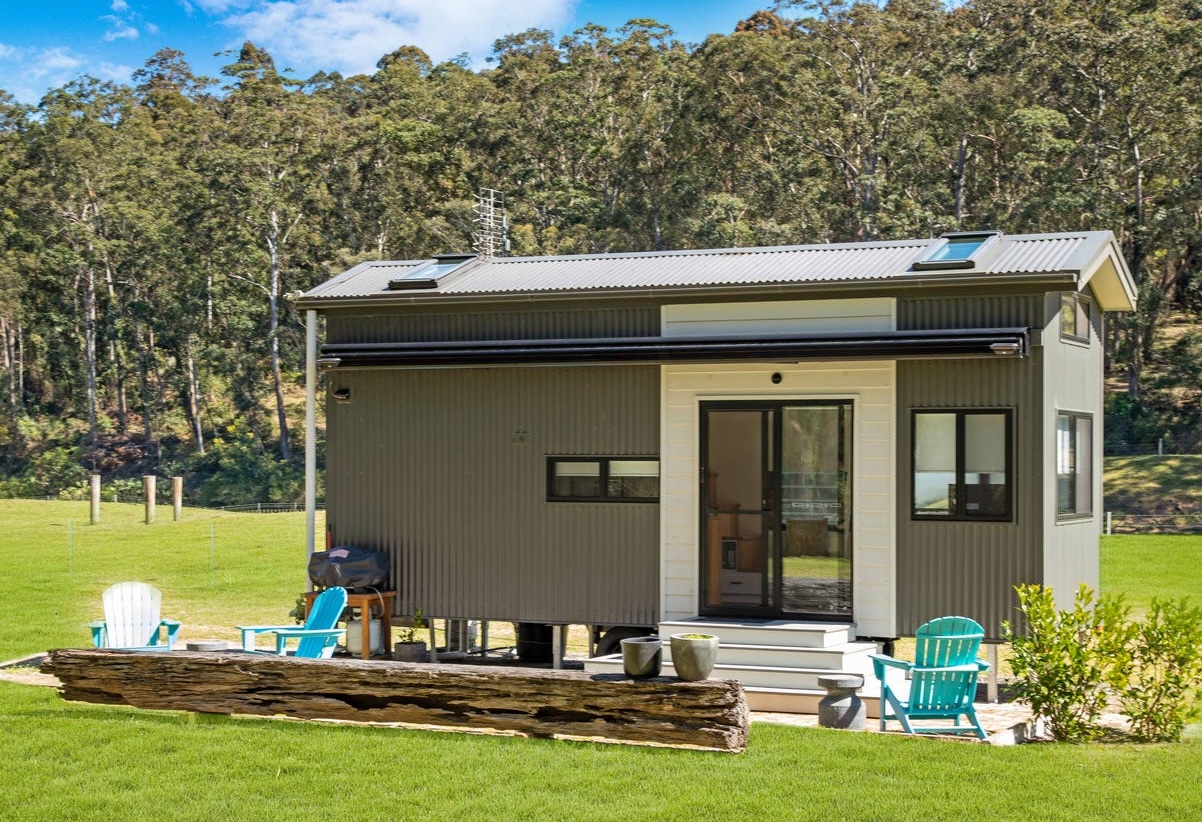
For sale: This 32ha property includes a tiny home on the banks of the Clyde River. Picture: realestate.com.au
At Into The Wild Escapes, landholders can choose between a fixed weekly lease or a share of the nightly booking fee.
“It depends on the type of agreement and the number of houses in one location, but typically our land partners earn between $5k to $25k per year per tiny house,” Ms Giannas said.
“We also take care of all insurance for the tiny homes, including public liability cover. Our model is 100% turnkey; they provide the land and we do the rest, including the housekeeping. It’s basically up to our partners how much they would like to be involved in the process. This creates a sustainable revenue stream for them while drawing new visitors into regional areas, which also benefits the wider community.”
Reflecting on the early days, Ms Giannas recalled countless cold calling and letterbox drops across regional New South Wales to get the idea off the ground.
“Now we’ve got so many people coming to us wanting to put tiny houses on their properties,” she said.
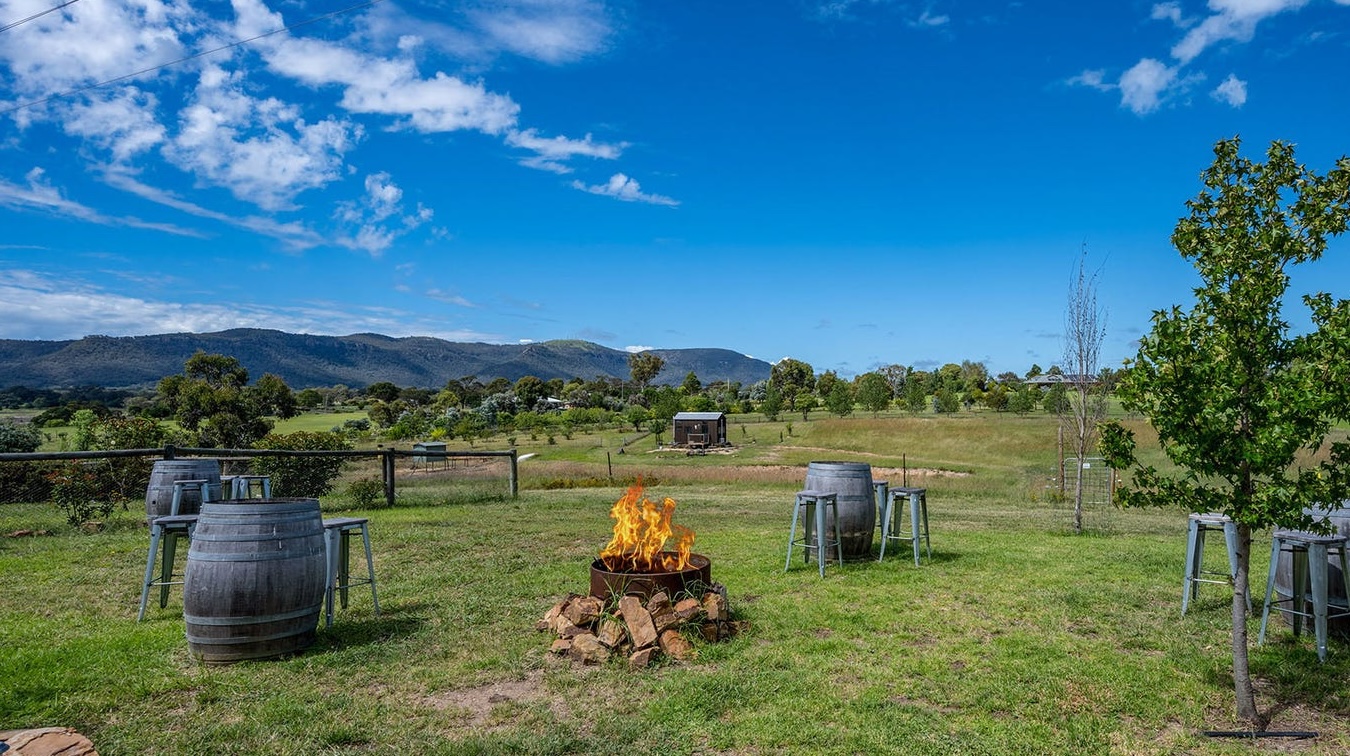
Landowners should consider any tax implications of leasing their land. Picture: realestate.com.au
Of course, many property owners are choosing to build and manage their own tiny homes privately and through other providers such as Airbnb and Stayz, which can be a valuable selling point to buyers seeking a tree-change with income potential.
But landowners should be aware of potential capital gains tax implications when leasing their land for tiny home accommodation, Sydney-based lawyer Oliver Morrisey pointed out.
“If the property is your main residence, it would normally be exempt from tax,” he says. “But if you use a portion of it to generate income, you lose the main residence exemption for that part of the land.”
Mr Morrisey said any future sale would require determining a partial capital gains liability, based on the ratio and duration of the leased land.
“Although the tiny home itself might be considered a chattel and subject to depreciation, the key factor for capital gains is the land use.”
Leave no trace
If a landowner decides to end a partnership, Ms Giannas said relocation is a simple process.
“It’s rare, and usually only happens when land is sold, but we can decommission and remove the house within a day. Within a few short weeks, you’d never know we were there. Our motto is to leave no trace on the landscape.”
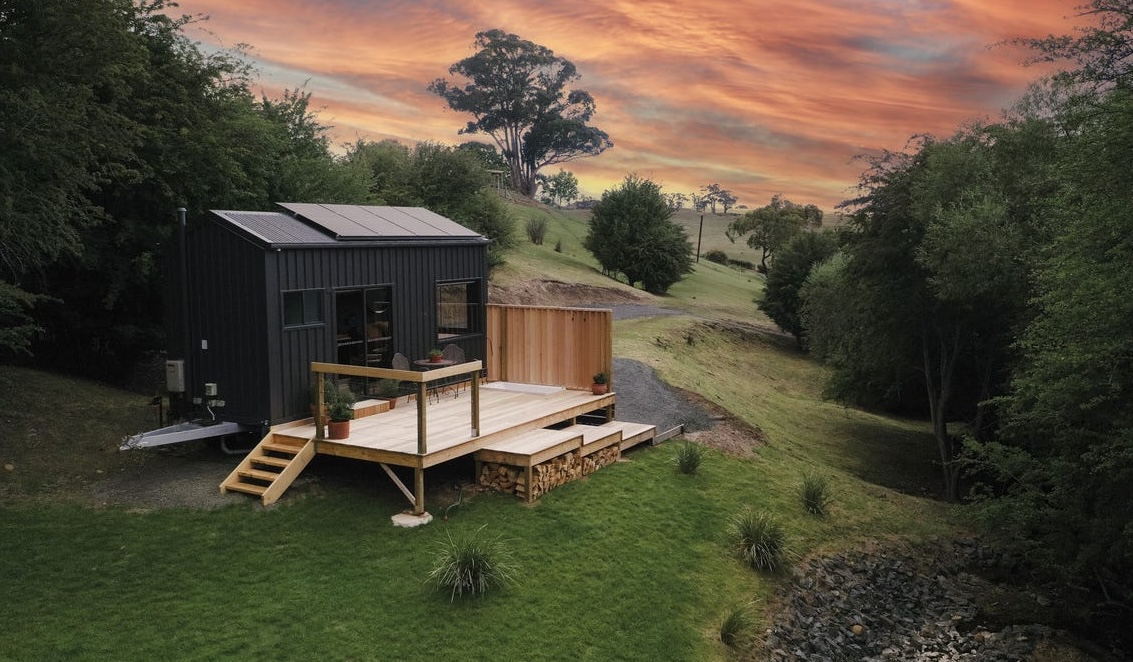
For sale in Whites Hills, Tasmania, the property includes a tiny home with fully equipped kitchenette, queen size bed, separate bathroom plus outdoor bath and fire pit. Picture: realestate.com.au
Along with their low touch to the land, Ms Giannas said the lightweight design of Into The Wild cabins also make them resilient to extreme weather conditions.
“We’ve had fires, floods and everything in between. But that’s the beauty of tiny homes – you can just pick them up and move them somewhere else.”

